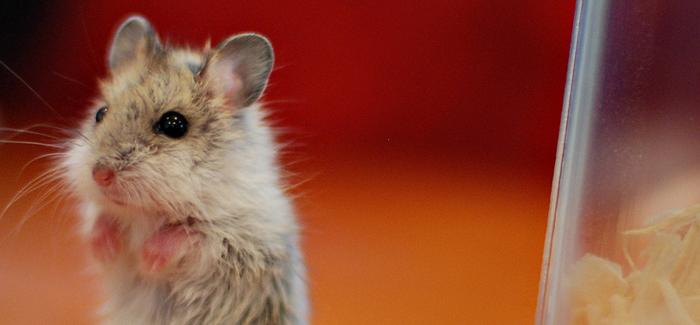
Internal clocks tell Siberian hamsters when to breed. (Photography by stupidmommy, CC BY-NC 2.0)
The distancing effect of superstition, new depths in earthquake research, the mechanism that winds hamsters’ biological clocks, and trustworthy insight into brain processes.
Curses!
To reverse a jinx, many people knock on wood. Others spit or throw salt. In each of those superstitions, Chicago Booth researchers noticed a shared trait: movements that physically push away bad luck. In the November Journal of Experimental Psychology: General, UChicago behavioral scientist Jane Risen, Chicago Booth student Christine Hosey, and National University of Singapore researcher Yan Zhang, MBA’09, PhD’09, report that overt “avoidant actions” are important in a superstition’s perceived effectiveness. After having study participants make fate-tempting statements, the researchers asked some to knock on the underside of a wood table up toward themselves and others to knock down on it, away from themselves. Those who knocked away from themselves felt more comforted. Avoidant action, the researchers said, helped make the image of a negative event less vivid.
Earthquake below
More than 20 years after California geologist Harry Green proposed a novel—and at the time, unprovable—explanation for the origin of deep earthquakes, UChicago scientists are part of the team that helped prove his theory true. Using a high-tech X-ray facility at Argonne National Laboratory to simulate and analyze extreme high-pressure, high-temperature earthquake conditions at depths of more than 248.5 miles below the surface, they demonstrated that these very deep earthquakes are triggered when a mineral common in the upper mantle, olivine, undergoes a transformation that weakens the whole rock, causing it to fail. Yanbin Wang, a senior scientist at UChicago’s Center for Advanced Radiation Sources; Julien Gasc, a postdoc at the center; and former postdoc Nadège Hilairet worked with scientists from French institutions and Green, from the University of California, Riverside, to confirm Green’s theory. The team’s findings appear in the September 20 Science.
Internal seasons
Siberian hamsters, which in the wild survive on the frozen steppes of Europe and Asia, only breed during the longest days of late spring and early summer. UChicago psychology professor Brian Prendergast and former postdoc Tyler Stevenson (now at the University of Aberdeen) are beginning to unravel the mechanism that keeps that breeding cycle constant. Exposure to shorter days, they found, sets off a biochemical process called DNA methylation, which alters the hamsters’ gene expression and shuts down their reproductive function during the fall and winter. The study, published in the October 8 Proceedings of the National Academy of Sciences, is “only the tip of the iceberg,” Prendergast said, in understanding the internal clocks that govern seasonal behavior in people and other animals.
In whom we trust
In everything from dating to nuclear disarmament, decisions depend on trust, often built on past experience or on a person’s reputation. To understand how the human brain processes trust in decision making, Margaret Wardle, a UChicago assistant professor of psychiatry and behavioral neuroscience, scanned study participants using fMRI while they played a game in which they could choose to keep a sum of money or double it with a fictive partner who would either split it with the participant or keep it. Fair partners split the money most of the time; unfair partners usually kept it for themselves; and “indifferent” partners split it half the time. Wardle and her coauthors found that a part of the brain called the caudate responded strongly when participants were deciding how to deal with unfair or indifferent partners and less so with fair partners. Published in the June 20 PLoS One, these findings may help researchers understand conditions like social phobia and autism, characterized by difficulty with interpersonal relationships and trust.
